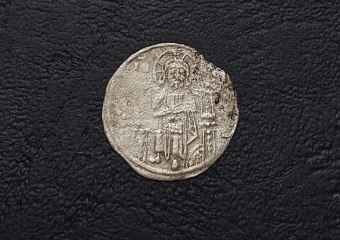Archaeologists explore in Rusokastro one of the largest water reservoirs in Bulgaria
During the current archeological season, the medieval town of Rusokastro did not fail to delight the archaeologists from the Burgas Museum, who are leading its research. Currently, excavations are underway at the reservoir of the castle, which turns out to be one of the largest in today's Bulgarian lands. It has a maximum length of 15 meters and a width of 7 meters, is 2.7 meters deep, and to the upper level of the arch - 4.40 meters. It collected between 300 and 350 cubic meters of water. Right in the middle, along the north-south line, 3 huge pylons were built, which supported two semi-cylindrical arches. They, in turn, were the floor on the second floor, which is probably of a representative, chamber character. Such reservoirs, with such coverage, are almost unknown in Bulgaria. In the fortress Mneakos / Monyak in the Rhodopes there is a similar facility, similar was one of the city reservoirs of Philippopolis - today's Plovdiv. The closest parallel - with similar pylons and columns supporting arches, are found in some reservoirs of Constantinople - today's Istanbul.
We are currently working in extremely difficult conditions. Probably during the earthquake the arches of the cistern collapsed together with the second floor, and at the moment the archaeologists are literally exhausting only stones, which are taken out at a height of 3-3.5 m, only by hand, with buckets and ropes.
In the process of research, dozens of finds were found - coins, iron arrowheads, even a beautiful fragmented helmet. Among the finds are at least 7 medieval vessels - amphorae and pitchers, which are literally smeared with collapsed stones and will be restored in the restoration studios of the museum.
Among the coins - apart from the Achaean principality, Andronicus III Palaeologus and Tsar Ivan Alexander, of particular interest is an extremely well-preserved coin of Tsar Michael III Shishman Assen - great-grandson of Tsar Ivan Assen II and Tsarina Irina Komnina, who reigned from 1323 to 1330.
This year the excavations of the medieval town of Rusokastro are funded by the Municipality of Kameno and the Ministry of Culture of the Republic of Bulgaria, and are carried out by the Regional History Museum - Burgas.


Comments
comments powered by Disqus